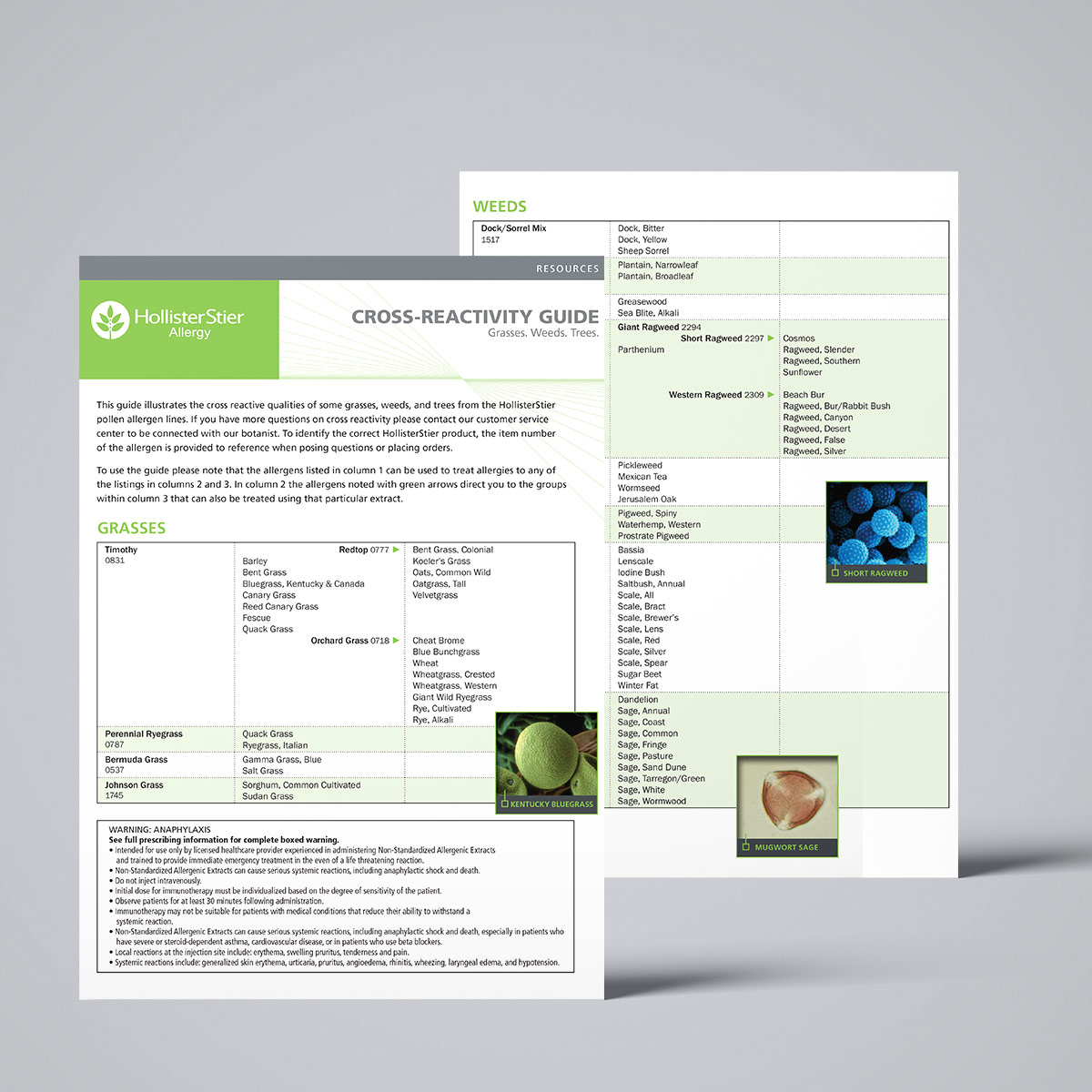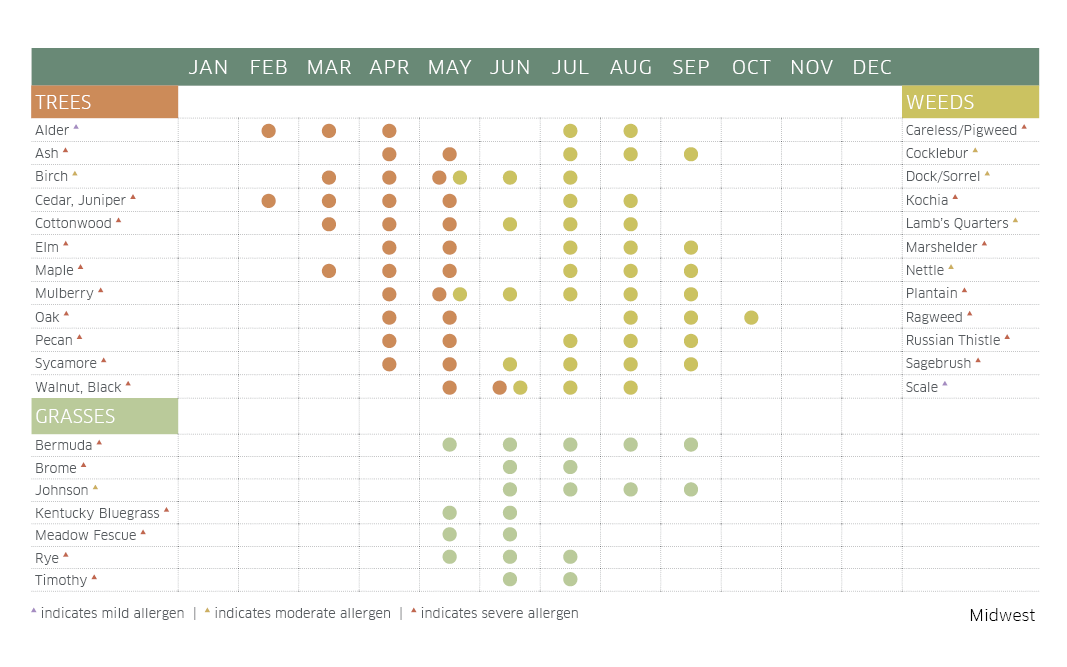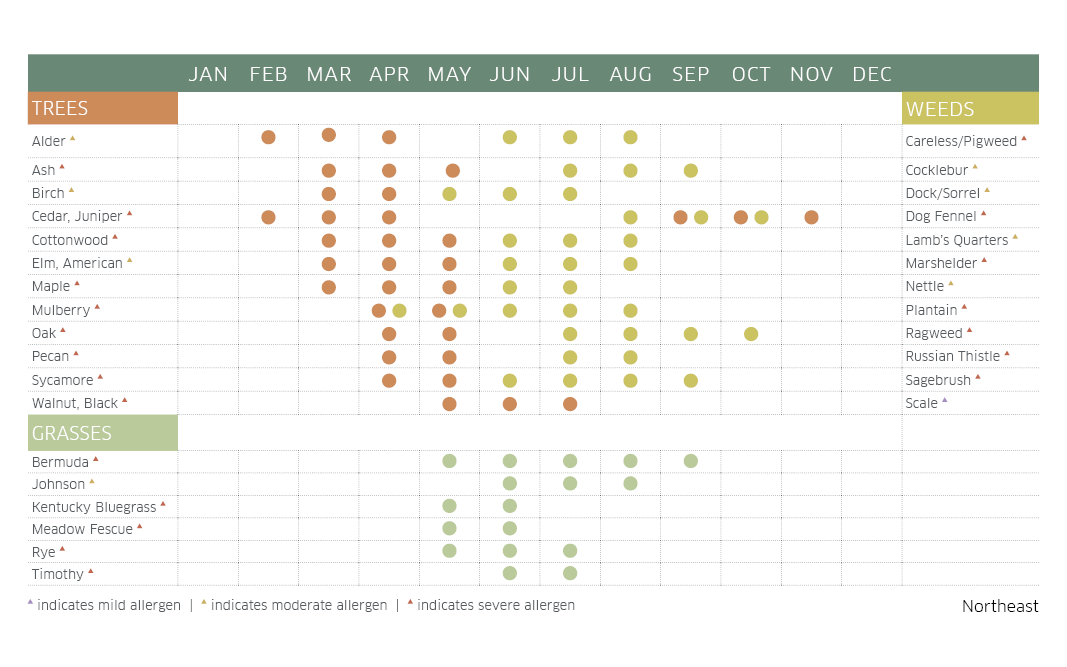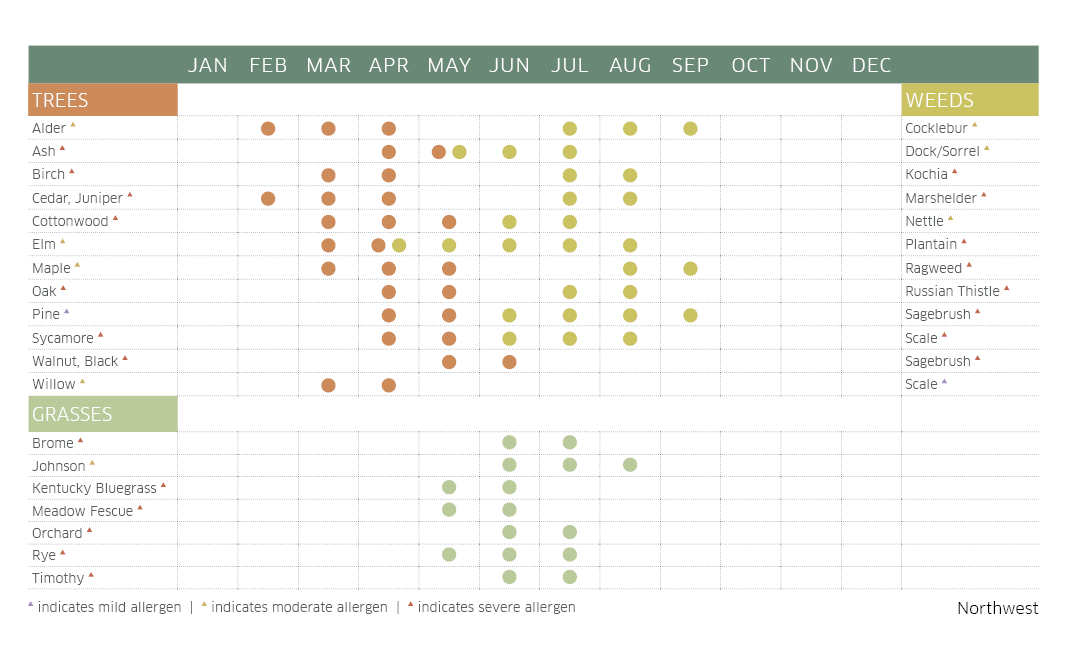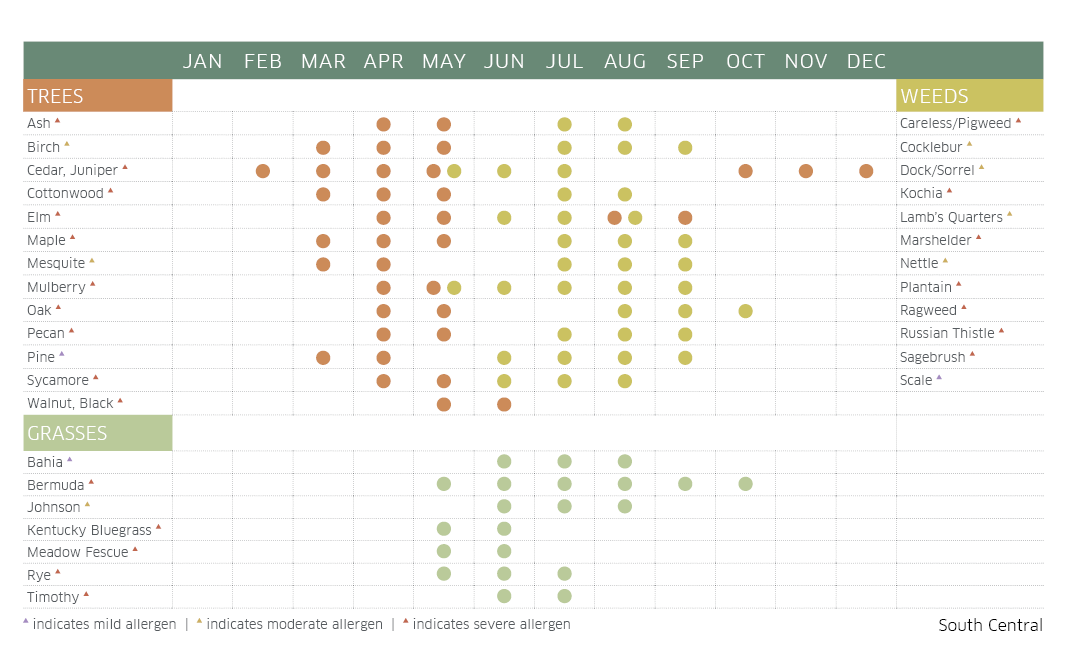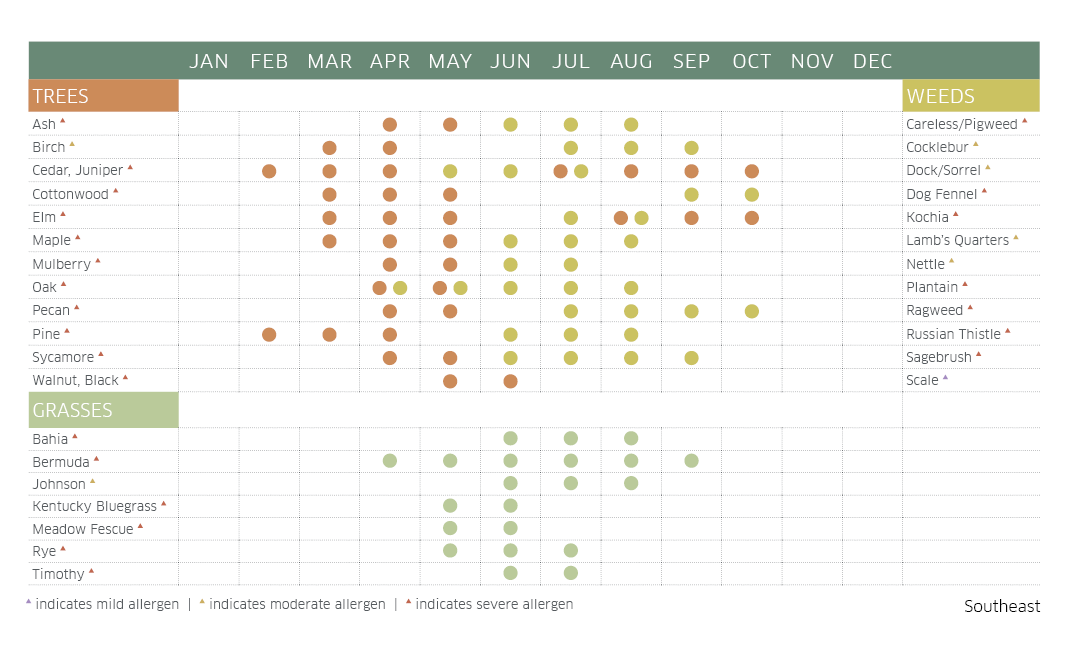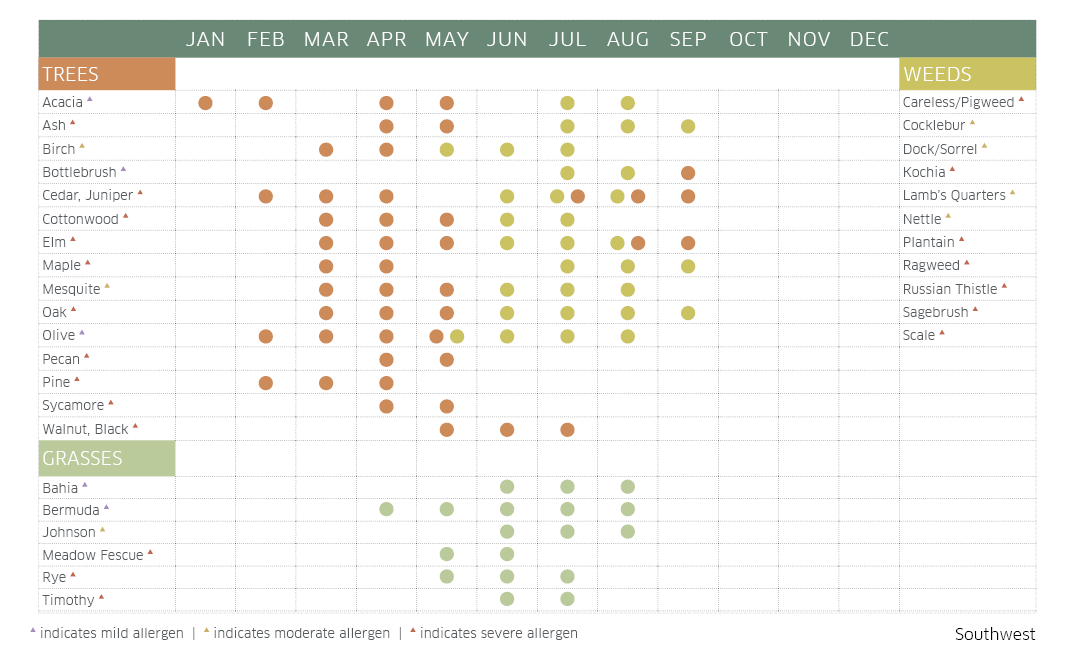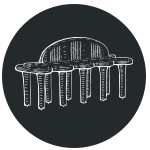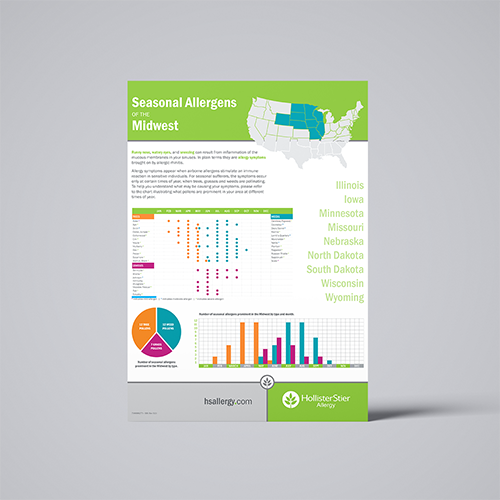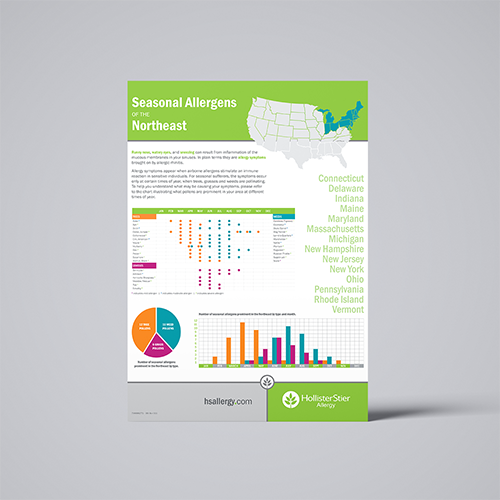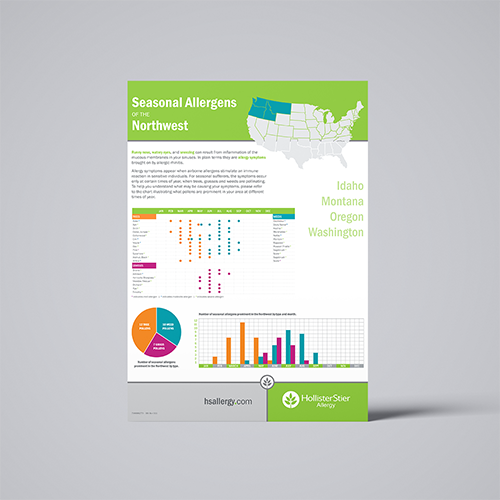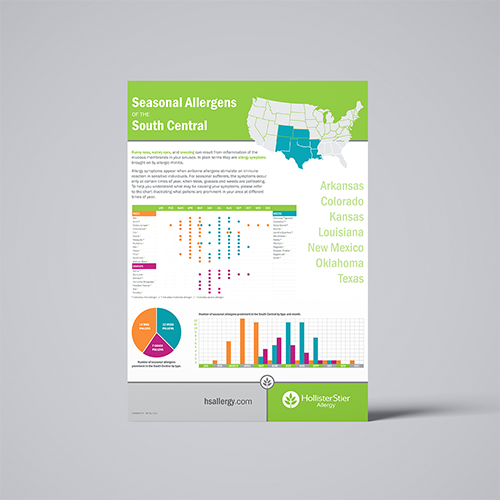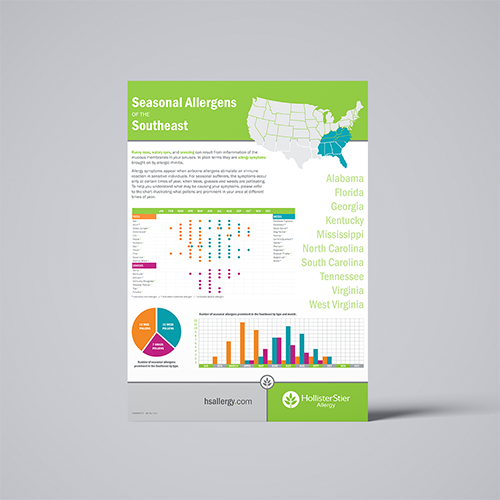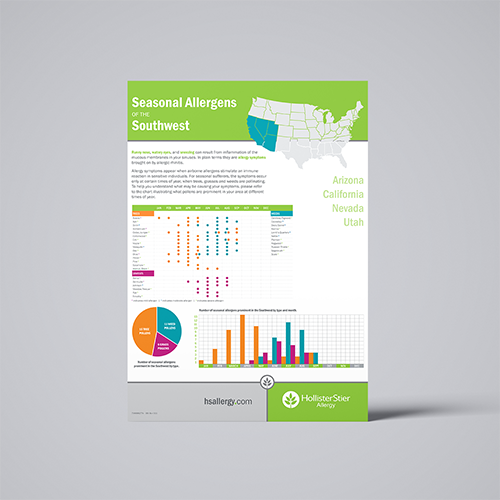Pollen Extracts
Localized Pollen Extracts: Enhanced Accuracy and Efficacy
Effectively testing and treating patients with allergies caused by grass, tree and weed pollen poses a challenge for providers. The prevalence of these allergens can differ depending on the region, emphasizing the need to customize panels regionally.
Inaccurate or incomplete testing panels can lead to suboptimal outcomes for patients. Providers like you need a comprehensive range of pollen antigens to accurately identify and address the allergens causing symptoms.
HollisterStier Allergy understands the importance of customized testing and treatment. With over 70 pollen extracts, we provide you the tools to accurately detect the allergens that are affecting your patient’s quality of life.
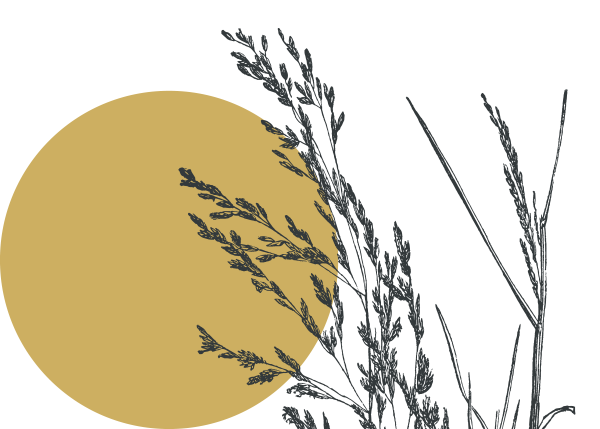
Customize Your Panels with HollisterStier Allergy Pollen Extracts
- Offer Tailored Treatment: With an extensive line of standardized and non-standardized extracts you can match the exact needs of your patients.
- Receive Expert Guidance: Take advantage of our in-house botanist and medical science liaisons, who are readily available to offer their vast knowledge and support.
- Empower Through Education: Teach patients to identify and avoid their allergens, and reinforce the importance of treatment, with HollisterStier Allergy’s free patient education materials.
Trust HollisterStier Allergy to provide the comprehensive range of grass, tree, and weed pollen extracts required for effective healthcare intervention and improved patient outcomes.
WARNING Important Safety Information (See full prescribing information for complete boxed warning.)
Intended for use only by licensed health care provider experienced in administering allergenic extracts and trained to provide immediate emergency treatment in the event of a life-threatening reaction. Observe patients for at least 30 minutes following administration. Immunotherapy may not be suitable for patients with medical conditions that reduce their ability to withstand a systemic reaction. Allergenic extracts can cause serious systemic reactions, including anaphylactic shock and in rare cases death, especially in patients who have severe or steroiddependent asthma, cardiovascular disease, or in patients who use beta blockers. Do not inject intravenously. This product is intended for subcutaneous injection for immunotherapy and percutaneous use for diagnosis. Refer to contraindications, warnings, precautions, adverse reaction and over dosage for more detailed information.
Pollen Cross-reactivity
This guide illustrates the cross reactivity of HollisterStier allergy pollen extracts so that you can effectively test and treat your patients.
Pollen Education for You
Access Regional Pollen Calendars
Deliver awareness to allergy sufferers with our downloadable and printable regional pollen activity calendars.
Looking for regional pollen posters to display in your office? Contact your sales representative to place an order.
Take a Botanist-led Pollen Walk
Interested in learning more about the pollens in your region? Our knowledgeable staff are available can help you identify different species of highly-allergenic trees and plants. Contact your sales representative to learn more about scheduling a pollen walk for you and your staff.
Experience a Virtual Pollen Walk
Learn how to quickly identify some of the most common tree, grass, and weed pollens in the United States.


